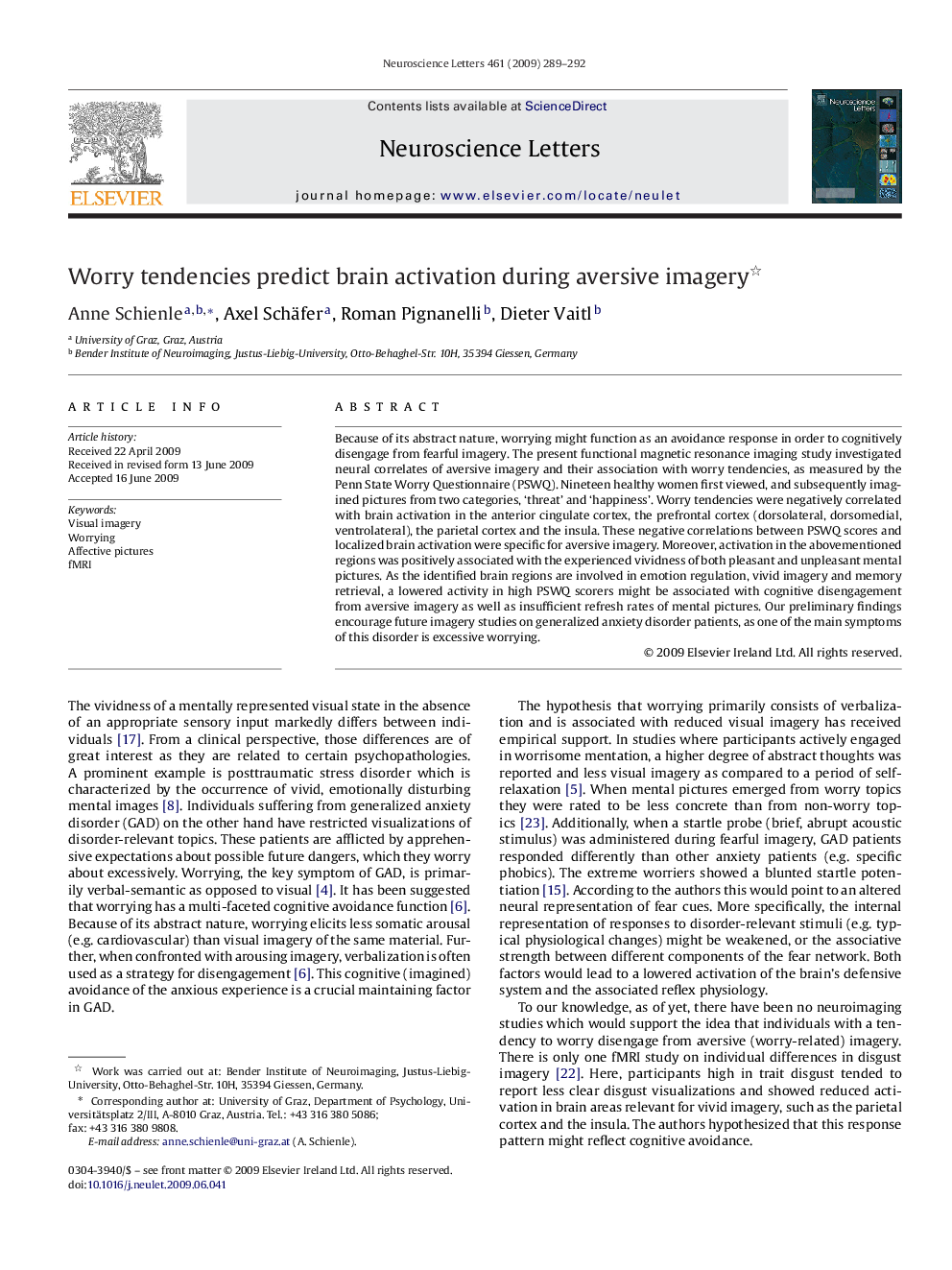| Article ID | Journal | Published Year | Pages | File Type |
|---|---|---|---|---|
| 4346933 | Neuroscience Letters | 2009 | 4 Pages |
Because of its abstract nature, worrying might function as an avoidance response in order to cognitively disengage from fearful imagery. The present functional magnetic resonance imaging study investigated neural correlates of aversive imagery and their association with worry tendencies, as measured by the Penn State Worry Questionnaire (PSWQ). Nineteen healthy women first viewed, and subsequently imagined pictures from two categories, ‘threat’ and ‘happiness’. Worry tendencies were negatively correlated with brain activation in the anterior cingulate cortex, the prefrontal cortex (dorsolateral, dorsomedial, ventrolateral), the parietal cortex and the insula. These negative correlations between PSWQ scores and localized brain activation were specific for aversive imagery. Moreover, activation in the abovementioned regions was positively associated with the experienced vividness of both pleasant and unpleasant mental pictures. As the identified brain regions are involved in emotion regulation, vivid imagery and memory retrieval, a lowered activity in high PSWQ scorers might be associated with cognitive disengagement from aversive imagery as well as insufficient refresh rates of mental pictures. Our preliminary findings encourage future imagery studies on generalized anxiety disorder patients, as one of the main symptoms of this disorder is excessive worrying.
